
What’s a superfood?
Superfood is a term for a nourishing, nutrient-dense food that does good things for your health. Incorporate these wholesome foods in your daily meal plan to feel better and more energized.
Best part: You don’t have to visit a holistic health store find them. Superfoods are often staples that you can pick up at your local grocer. (And we’ve got tons of recipes for them, here!) Follow along for eight health-promoting foods to start with—and some of the awesome benefits you’ll feel.
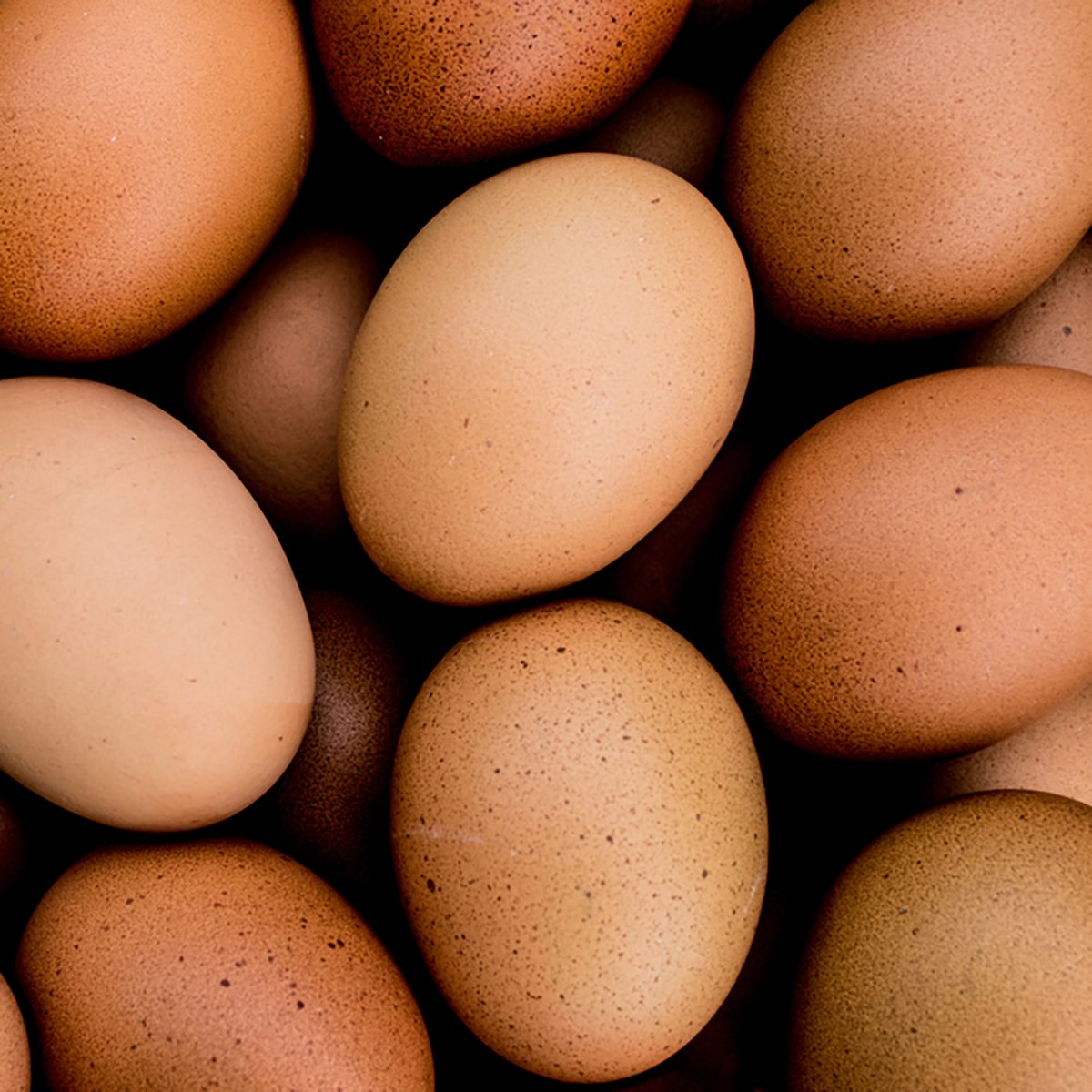 Eggs
Eggs
Eating an egg or two for breakfast ensures you won’t be ravenous by 11 a.m. Each 70-calorie egg provides you with 6 grams of protein—in addition to omega-3 fatty acids, that protect against heart disease and stroke, and the antioxidants lutein and zeaxanthin, which promote eye health.
We love scrambling two eggs (in butter, salt, pepper and olive oil, to taste) or layering sliced hard-boiled eggs on toast with a sprinkle of flaky sea salt. If you’re cooking for a crowd, stir up an egg frittata with iron-rich spinach for a healthy dose of protein that’ll keep you going and going and going…
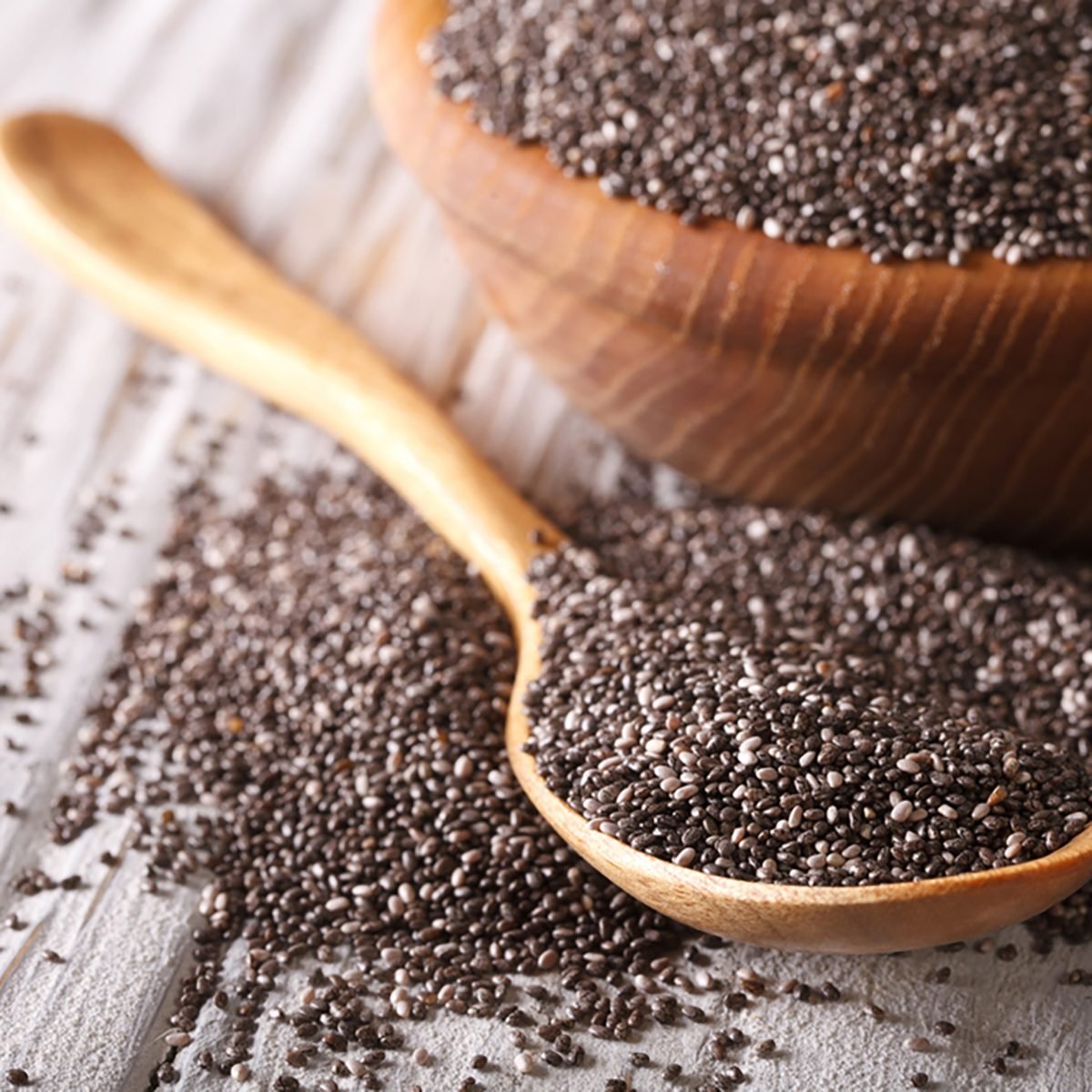
Chia Seeds
If you haven’t tried chia seeds yet, grab a pack at the store. In every tablespoon, you’re getting 3 grams of protein, 6 grams of soluble fiber and 5 grams of healthy fat. These super seeds boast calcium, potassium, magnesium and iron which are essential nutrients that help keep your body in tip-top shape. The seeds have a mild nutty flavor so they’re great stirred into granola, fruit juices and baked goods. For an easy and nutritious breakfast, add chia seeds (and a few other tasty ingredients) to your morning yogurt.
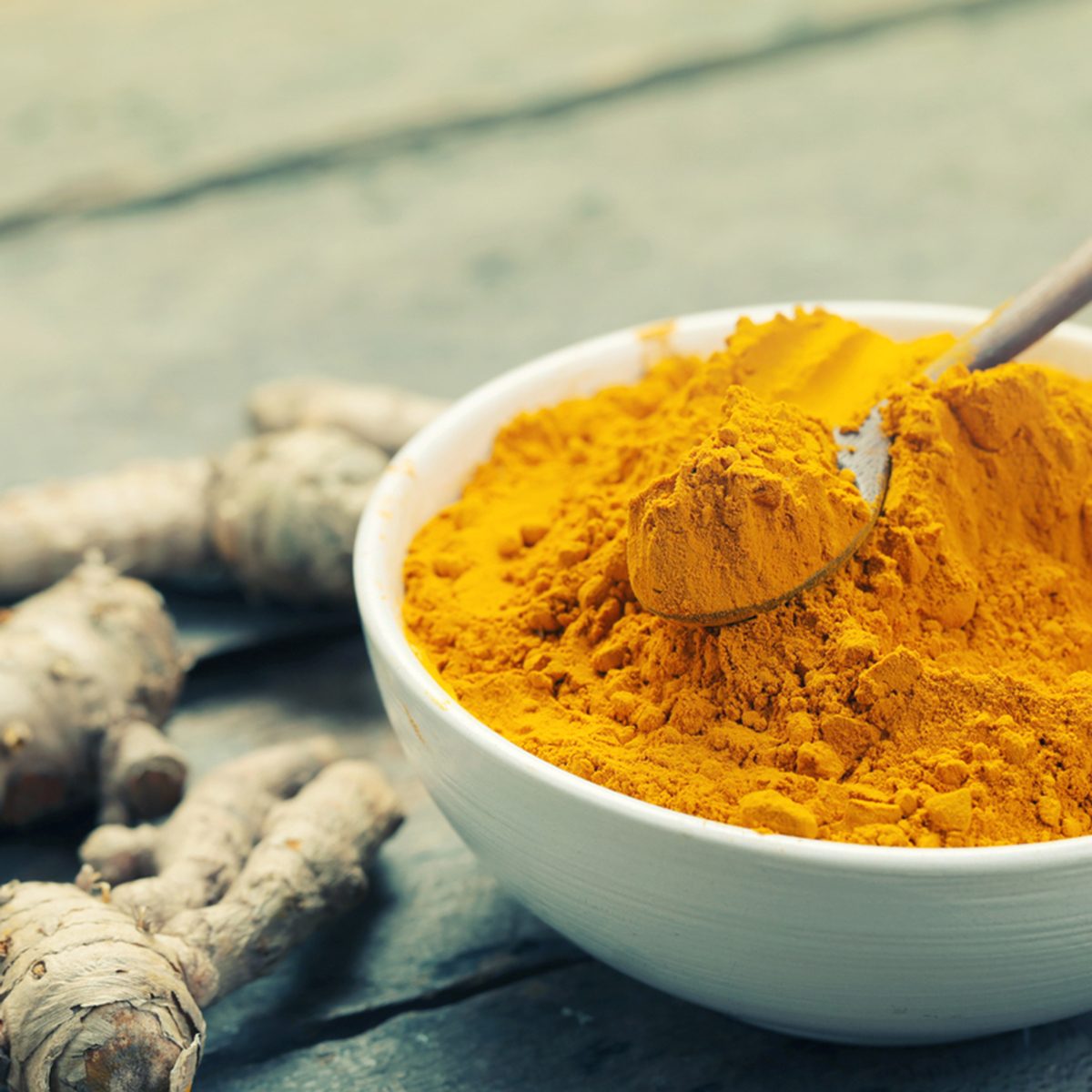
Turmeric
Turmeric is a bright yellow aromatic spice that adds subtle flavor. The spice, made from a root, is rich with curcumin. According to a study from BioMed Research International, it’s antimicrobial and shows promise as being antibacterial and antifungal. Eating curcumin may also give you glowing skin and improved digestion. We’ll add that to our spice rack any day!
Turmeric works well with seafood and curries. Alternatively, you can make an anti-inflammatory “golden tea” by combining non-dairy milk, honey, ginger, black pepper and a heaping teaspoon of the yellow spice.
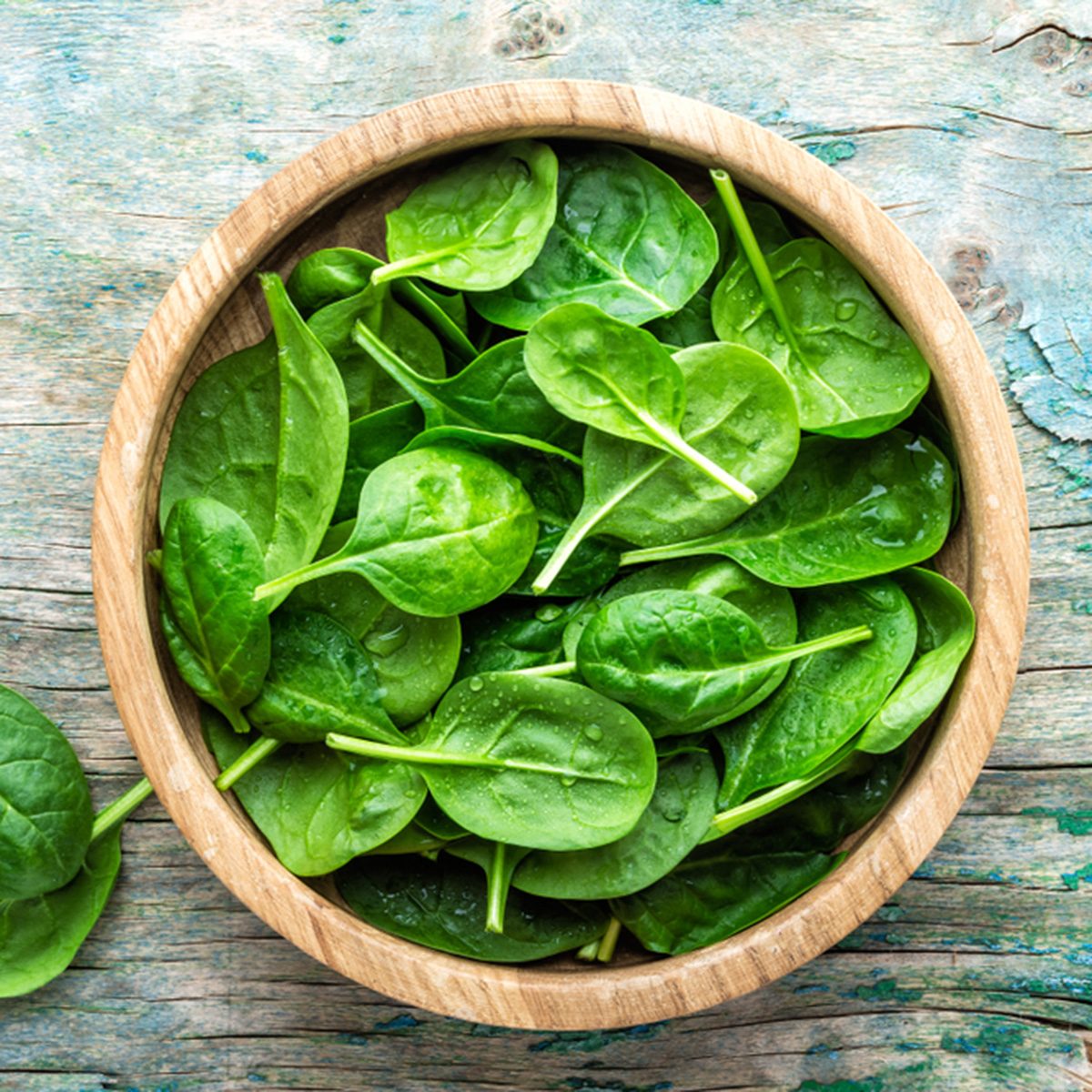
Dark Leafy Greens
You already know consuming dark leafy greens is vital to becoming your healthiest self. They’re an excellent source of fiber, vitamins A, C, E, and K, iron, magnesium, potassium, and calcium—but there’s another magical ingredient we’re after: chlorophyll. It’s the green pigment in plants responsible for turning sunlight into plant food—and it’s amazing for you. Research suggests increased amounts of chlorophyll can help eliminate bad breath, lower cancer risk, flush toxins, boost intestinal flora and ease inflammation. All that in a leafy green salad? Count us in.
The best sources of chlorophyll are dark, leafy greens including spinach, arugula, kale, Swiss chard, collard greens, wheatgrass and even matcha (a powder made from green tea leaves). Take advantage of chlorophyll’s health-boosting benefits by incorporating more raw salads into your day. We’ve wrangled up the best-tasting ways to sneak leafy greens into your diet.
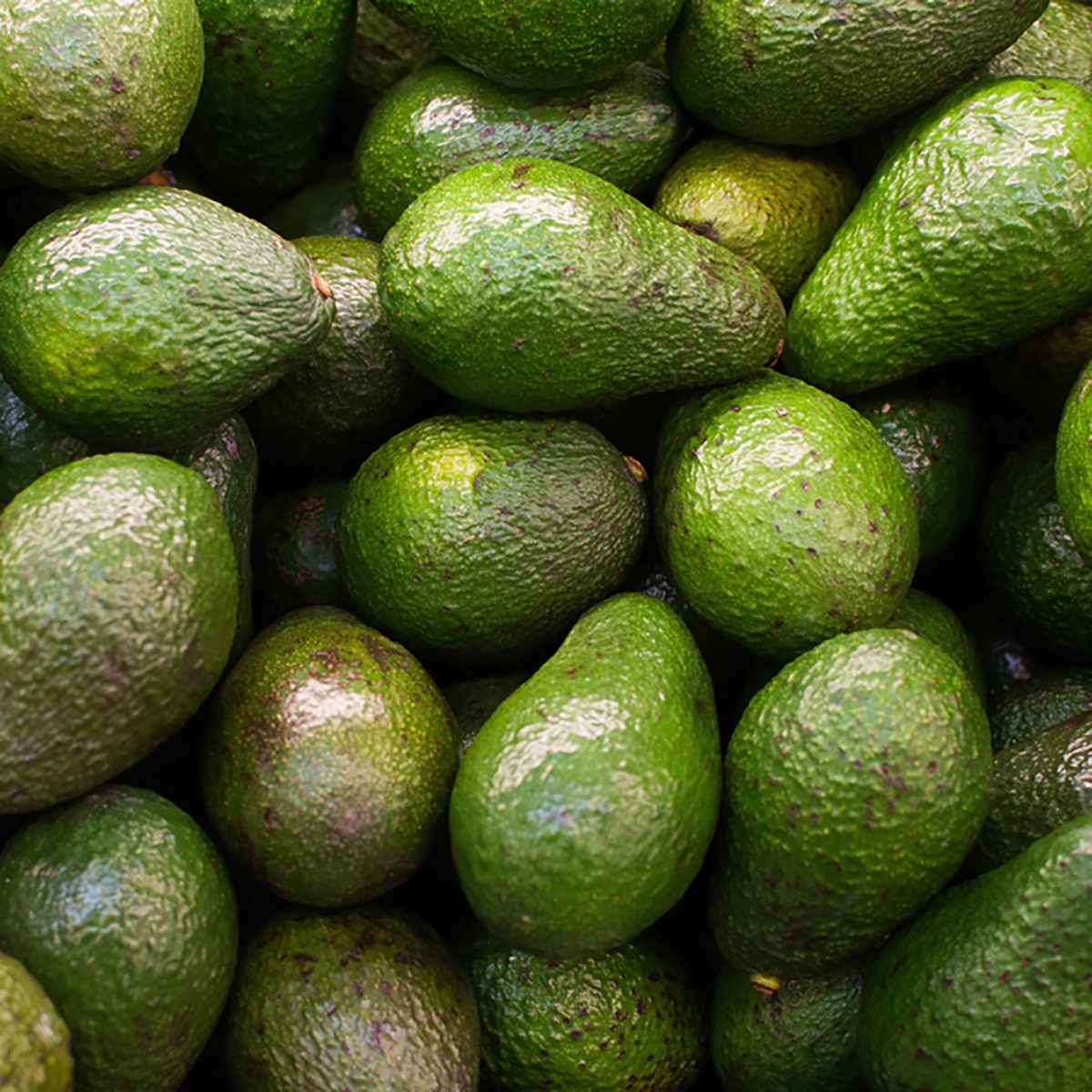
Avocado
Here are a few reasons to feel awesome about eating guacamole for dinner—again: Just one serving (about 1/3 of a medium-sized fruit), has 5 grams of healthy monounsaturated fat, 1 gram of protein, 3 grams of dietary fiber and nearly 20 vitamins and minerals, including potassium. Eating high-potassium foods such as avocados, spinach, beans and bananas has been shown to help lower blood pressure.
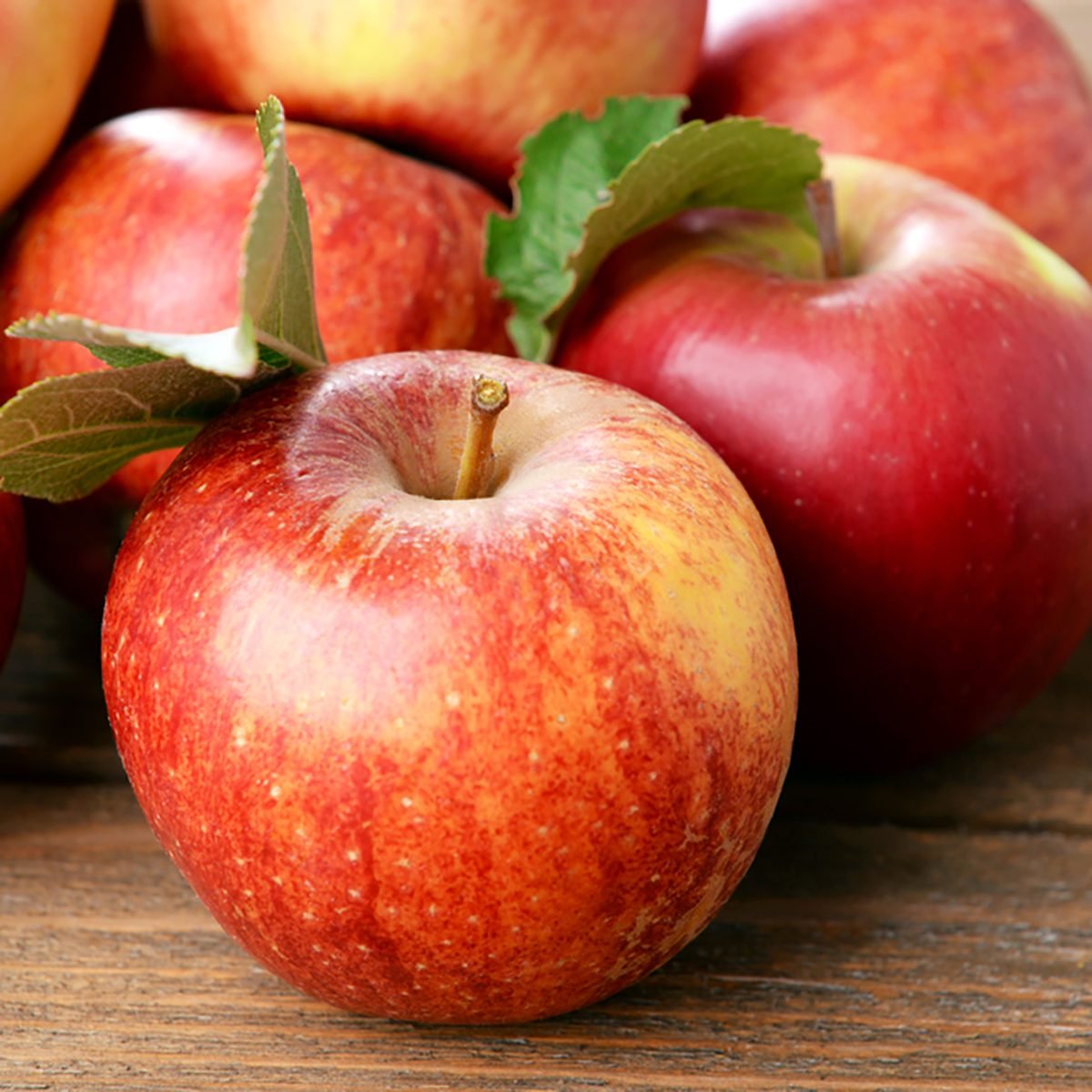
Quercetin-Rich Foods
Quercetin is a flavonoid (plant pigment and antioxidant) found in vegetables, fruits, nuts, roots and seeds—including apples, onions, rutabaga, tomatoes, kale, peppers and radishes. Research points to quercetin as having anti-infectious and anti-inflammatory properties. This powerful flavonoid cleans up unstable free radicals that cause damage to your body, so it helps fight against heart disease and brain diseases such as Alzheimer’s, Parkinson’s and dementia.
To retain quercetin in foods, avoid boiling or frying, which can reduce the amounts. Onions, however, can retain quercetin levels up to 212ºF. If you’re eating apples for the benefits of quercetin, eat with the peel.
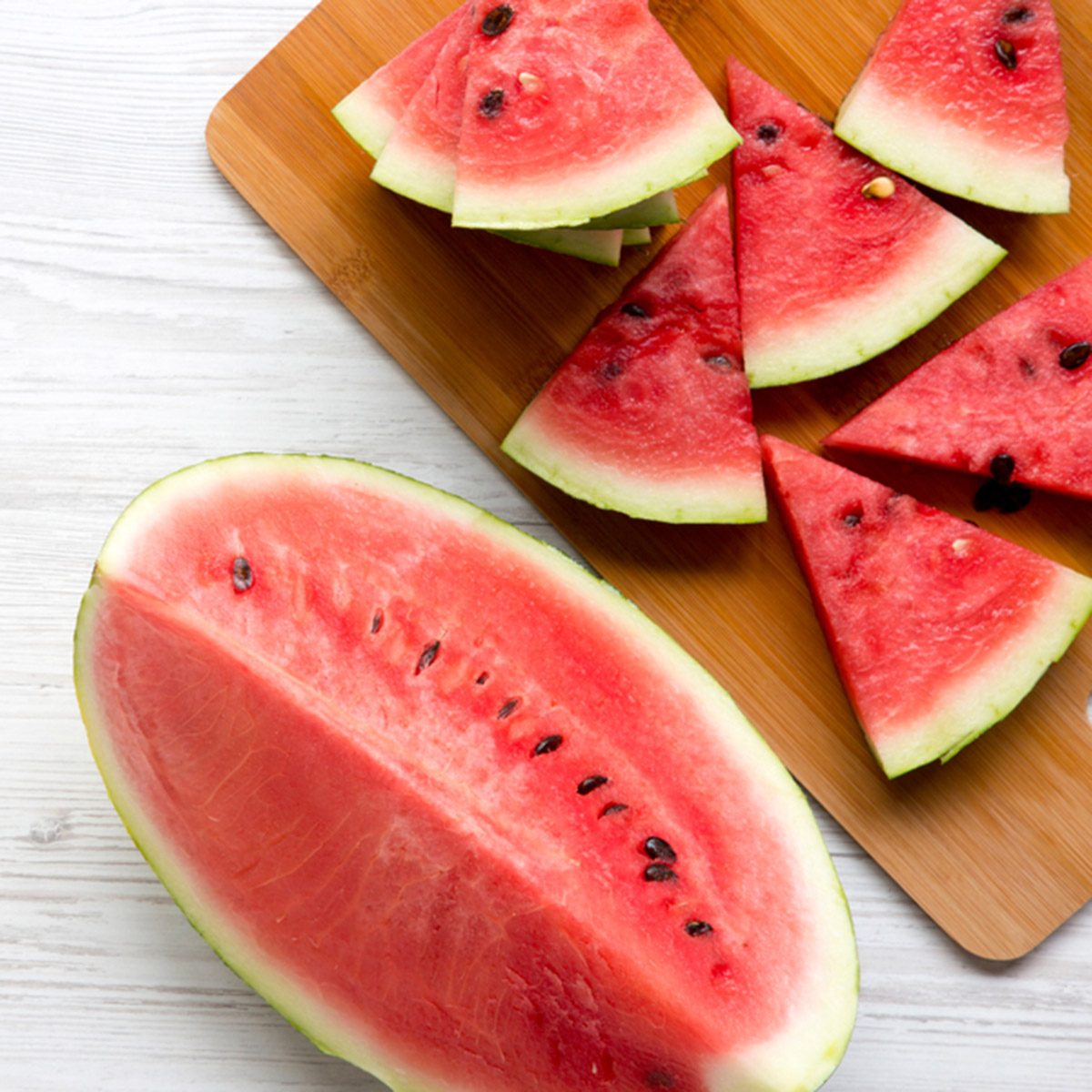
Watermelon
There’s nothing better for your skin than eating H2O-rich foods like melon. In a 1 cup of watermelon (46 calories), there’s an abundance of water, fiber, vitamin A, vitamin C and potassium. Watermelon is a great source of antioxidants including lycopene (a carotenoid or plant pigment also found in tomatoes, carrots and grapefruit) that protects cells from damage. A cup and a half of watermelon contains 9 to 13 milligrams of lycopene, according to the USDA. Researchers are hopeful that lycopene intake can help deter risk for certain cancers and cardiovascular disease. Plus, you get a tiny workout lifting heavy melons from the backseat of the car.
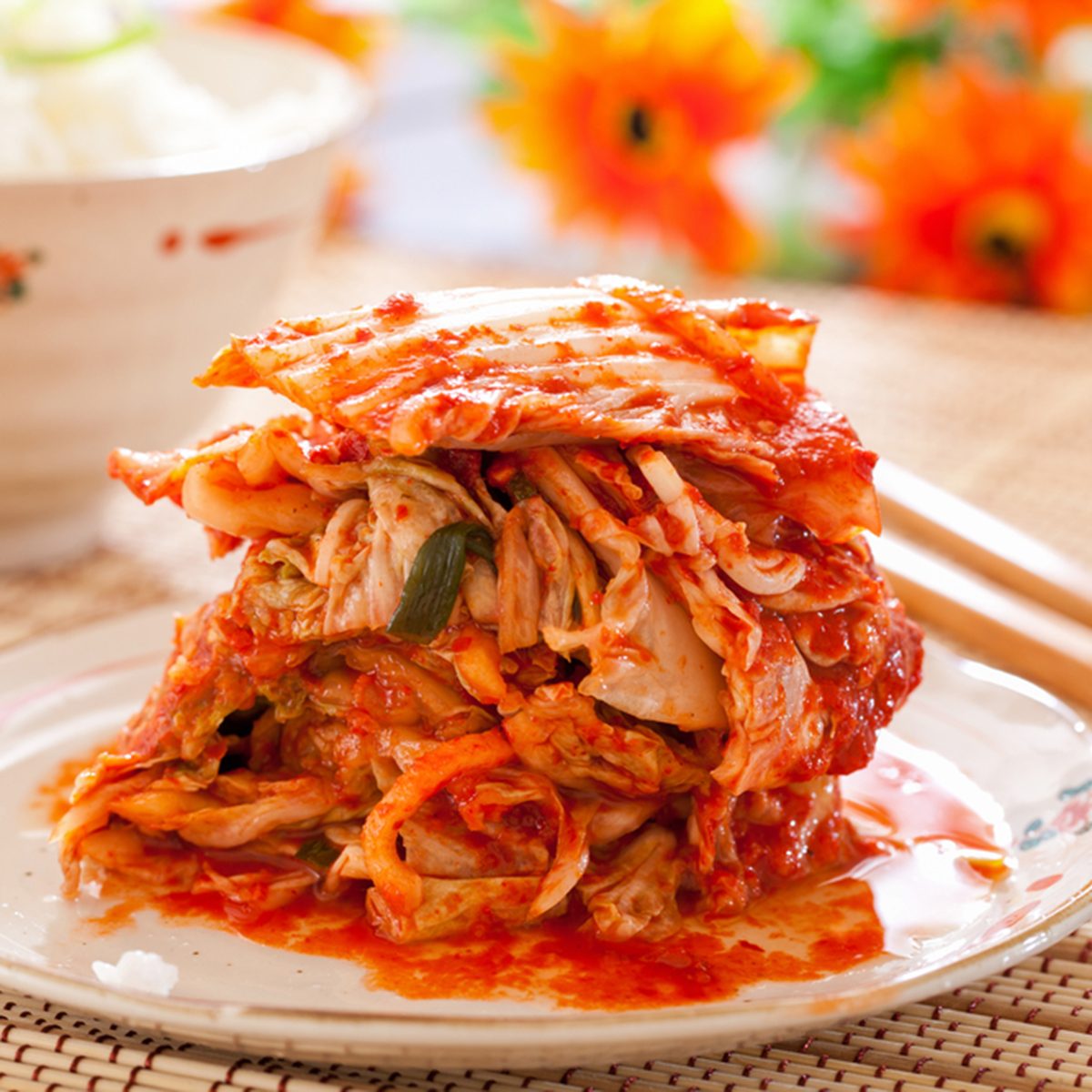
Kimchi
Kimchi is a traditional Korean side dish that’s eaten with almost every meal. The fermented recipe is typically made with napa cabbage, daikon radish, aromatics and spices—though recipes vary from family to family. The probiotic-rich food is hydrating and a great source of potassium, calcium, and vitamins A, C and K. Like other fermented foods, eating kimchi can boost the amount of healthy gut bacteria, which helps to regulate your gastrointestinal tract and improve the immune system. Make our recipe or snag some kimchi from your store today.
These are just a few of the foods with incredible nutritional juice that will help you feel your best. While it’s best to eat nutritious, good-for-you foods most of the time—it’s OK to save a bit of wiggle room for the stuff that makes us happiest (yes, chocolate cake!) As always, consult a nutritionist or other medical professional to help you with specific health and nutritional goals.
The post 8 Superfoods to Eat When You Want to Feel Healthier appeared first on Taste of Home.
Joann Pan